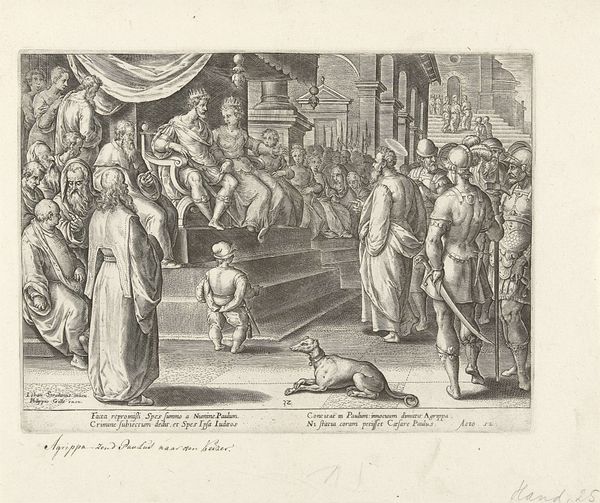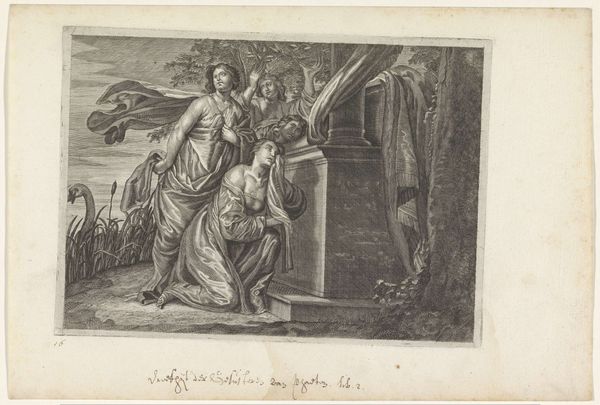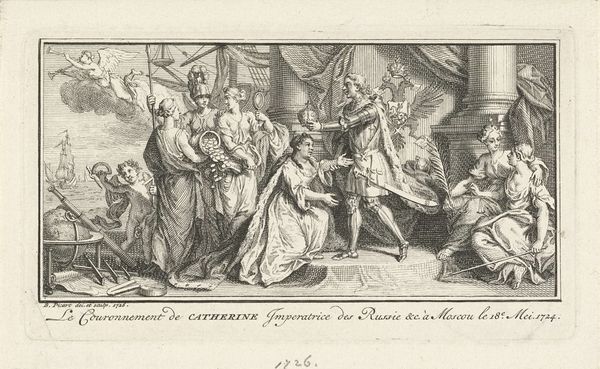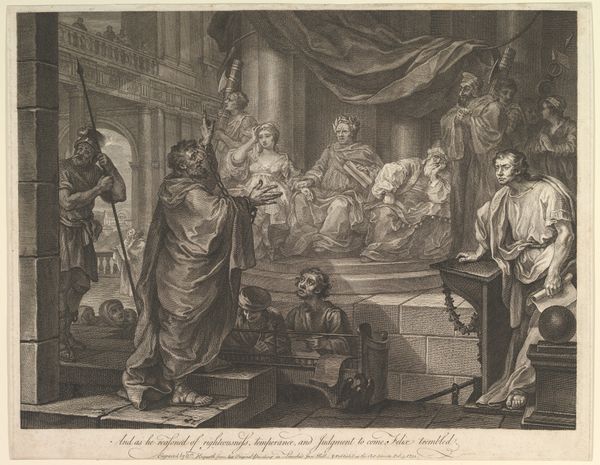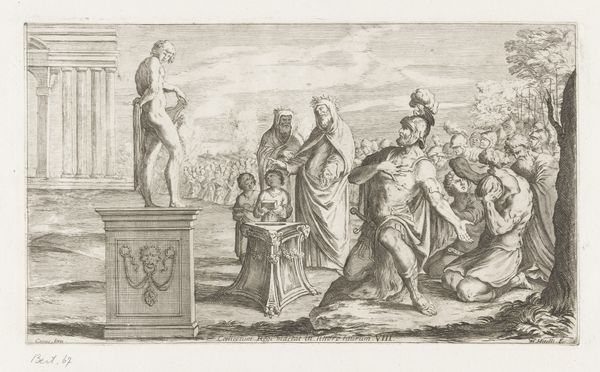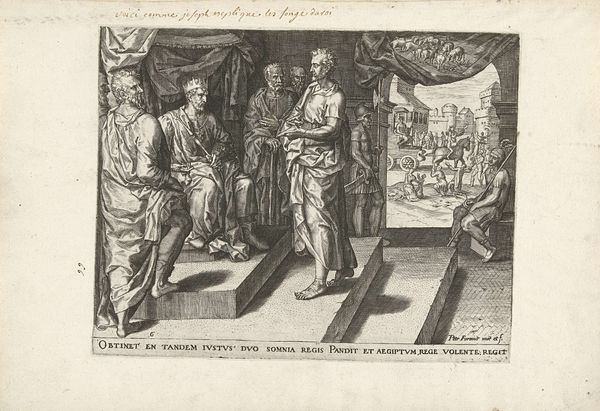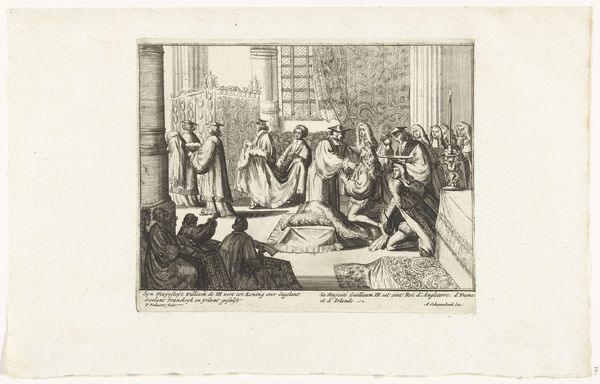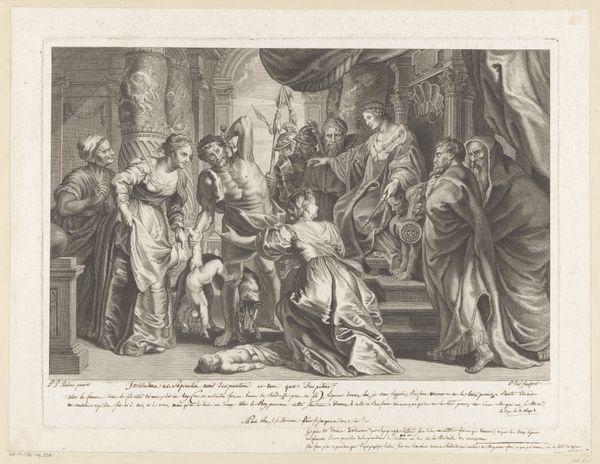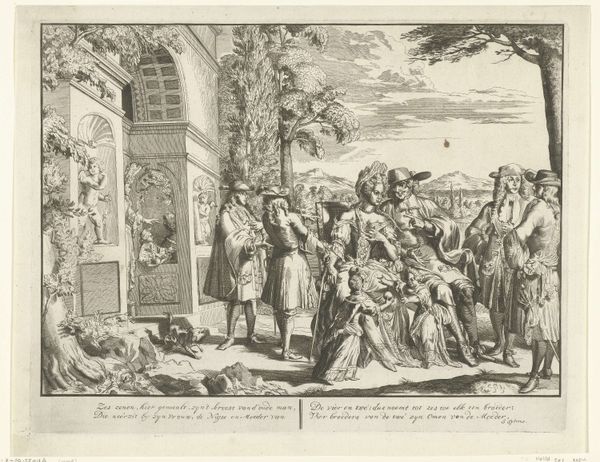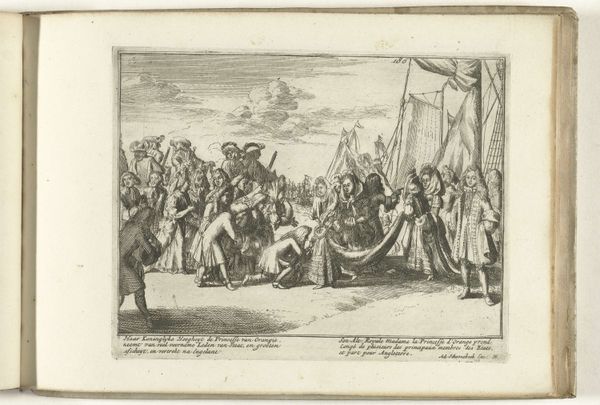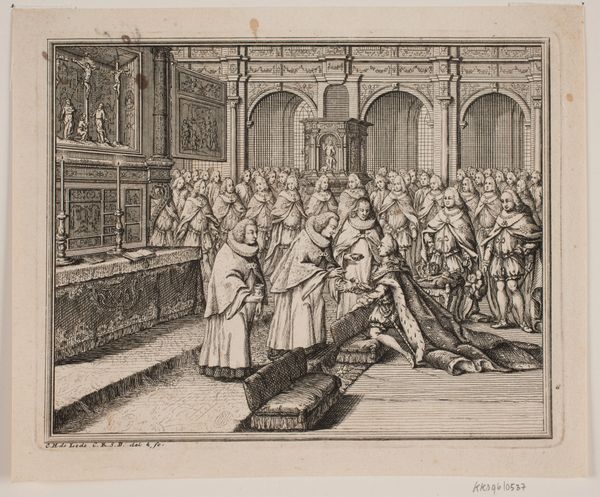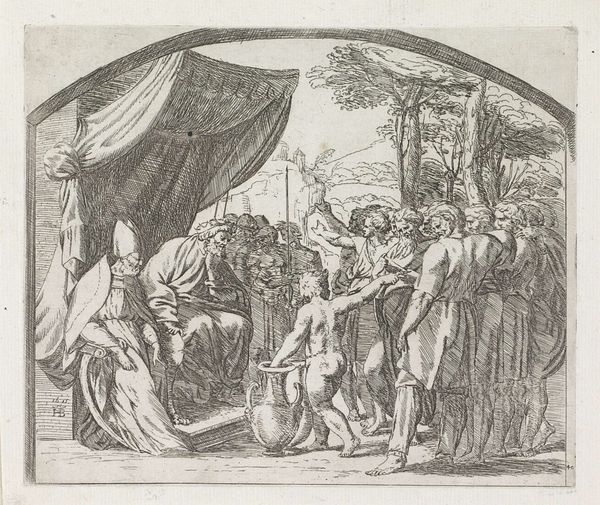
print, engraving
#
baroque
# print
#
figuration
#
history-painting
#
engraving
Dimensions: height 164 mm, width 226 mm
Copyright: Rijks Museum: Open Domain
Crispijn van de Passe II created this print, “Offer van Polyxena”, sometime in the 17th century. It depicts the scene of Polyxena’s sacrifice from Greek mythology. But what does this image say to its 17th century audience? The print was made in the Netherlands, a Protestant nation that had recently won independence from Catholic Spain. Sacrifice was a key theme of the Reformation. Protestants rejected the Catholic idea that priests could re-enact Christ’s sacrifice during mass, arguing that Christ’s sacrifice was unique and unrepeatable. With this in mind, it is interesting to consider how the print depicts an improper and unholy sacrifice. The Roman soldiers are dressed in classical garb, but their presence suggests the violence of the state. Historians use a range of resources to understand the role of images such as this. Contemporary books, pamphlets, and sermons can all shed light on the social and institutional context of van de Passe's printmaking.
Comments
No comments
Be the first to comment and join the conversation on the ultimate creative platform.
